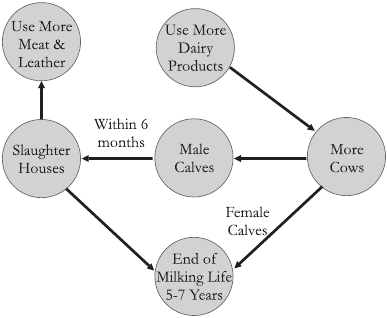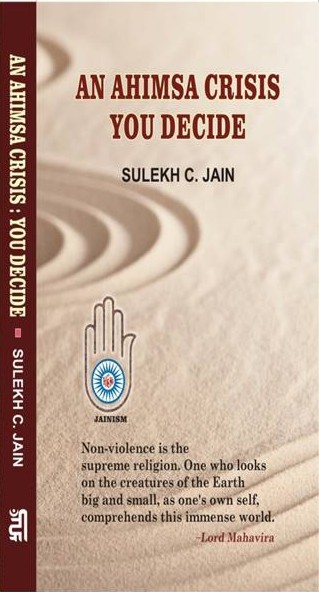The current situation is very different.
The use of milk and dairy products in India, and globally, has increased manifold over the last five to six decades. There are hundreds of sweets, paneer bhaji and other paneer items, pizza, and more and bigger abhisheks and artis in temples everywhere.
The production of milk is a huge industry; industry includes large cooperatives, with thousands of cows, and government and private milk corporations. Only a very small percentage of milk is now produced by cows kept in users’ homes and treated and raised humanely.
From birth, the life journey of a cow is full of human-caused suffering, torture, and pain.
Please note that the average life span of a normal cow (not in factory farms) is 20-25 years. Factory farms cut it down to 5-7 years as after this life span they are sent to slaughterhouse.

First, a female cow is kept constantly pregnant (by artificial insemination), gives birth six to eight times, her milk is sucked by machines (a constant and tortuous process), and as soon as the milking life is over (which lasts no more than five to seven years), the cow is then straightaway sold to slaughterhouses to be killed for meat and its other byproducts. This actually happens in India, too, every second. One only has to go to the dairy farms to see the torture with one’s own eyes. Many a time, seeing is believing. In fact, there is more torture to cows and to their offspring in India than in the US. This is a reality. Slaughterhouse wastes (very low quality meats) are mixed in cow feed and are then given to the cows to improve milk yields, thus making the cows non-vegetarians. This might come as a surprise to Jains who have always believed cows to be vegetarian animal. This was once the case, but not anymore. During its milking life, cows are fed and injected with many medicines and hormones, thus practically making milk poisonous for human consumption.
And so we see: milk production and consumption has a very strong himsa footprint to five-sensed animals. There are no ifs, ands, or buts about it.
 Dr. Sulekh Chand Jain
Dr. Sulekh Chand Jain
